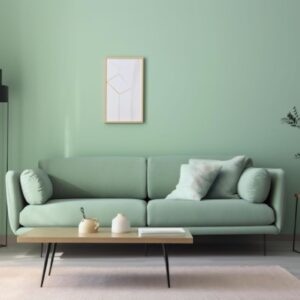
Lighting influences the ambience of every room, from your kitchen to your bedroom. It can be difficult to decide which lighting options will work best in each specific space because there are so many available. Additionally, the fact that light fixtures sometimes become a room’s main focal point makes it understandable why creating a lighting plan can be a little challenging.
For advice on how to select the best lighting for each room in your house, continue reading.
The importance of home lighting
Your first thought when considering the lighting in your home involves the fixture’s design. Even though aesthetics is always important, the light itself is also vital to giving you the best level of brightness possible. You can lessen eye strain, headaches, and eye fatigue by selecting the appropriate lighting for your home. The right lighting choice will make it much easier for you to complete daily tasks, and it can also alter the size or mood of a room in terms of interior design.
Factors to consider when choosing to light
People frequently overlook this because they are too busy and lack the time to think about how to incorporate light into their décor. When decorating your home, be sure to give thought to the type of lighting you want in each space.
Choose Your Decor Theme
To choose lighting that enhances the space, you must first decide on your decoration. You’ll achieve balance in your interior design, create a more inviting atmosphere in your home, and enhance the area’s appearance.
Size matters
The size of the lights for home décor must be proportionate to the size of the space you want to have them installed in.
Type of home Lighting
No one will be able to remain in the space for awfully long if you choose a light that shines too brightly because it might affect people’s eyes. To reflect warmth, choose bulbs with a hint of yellow.
Personal choice
There are many different types of lights for room decor available, and since it is your own space, you should make it as comfortable as possible for yourself.
Take Flexibility into Account
When installing new lighting, you should consider installing a dimming system to control the lighting in the room. This gives users flexibility depending on the time of day or even their mood.
Types of lighting fixtures and their purposes
Most lighting serves a purpose, and it typically falls into one of three categories: ambient, accent, or task lighting. Here’s a closer look at each one, along with what they can offer you:
Ambient
This kind of lighting typically creates a cosy, calming atmosphere in a space. Ambient lighting can be focused, or it can be overhead lighting fixtures like pendant home decor lights.
Accent
Accent lighting can draw attention to certain interior decoration features. To highlight a unique wall texture or decorative items, place a wall lights decor like a small buffet lamp on a console table.
Task
Task lighting aids you in completing tasks, like reading a book, chopping vegetables, or folding laundry, as the name suggests. Multitasking is simple by adjustable task lighting, such as a floor lamp with adjustable arms or a swivelling desk lamp.
Creating home lighting plan for your space
Knowing the purpose of each room is crucial to developing a good lighting plan for your home. In this manner, you can take into account the activities people do in space and offer practical and imaginative lighting.
- Create a floor layout
- Consider the purpose of light
- Accent lighting creates an atmosphere
- Make a budget
- Choose luminaires, sometimes referred to as lighting fixtures
Home lighting tips to maximize natural light
Natural light in your home is always better than artificial light. It fills your room with rich, full-spectrum hues that light bulbs can only mimic, and it boosts your body’s serotonin levels. Best of all, natural light doesn’t come with an electric bill at the end of the month. There are some creative projects you can do to increase natural light indoors.
- Paint the eaves white
- Use the lighter interior wall and ceiling colours
- Turn your walls into mirrors with a glossier colour
- Use glass or highly reflective tiles
- Install skylights in the ceiling
- Add reflective room features
- Light fabric
Balancing functionality and aesthetics with lighting
Too much focus on functionality can lead to boring design, while too much focus on aesthetics can lead to a poor user experience. Finding a good balance between the two is essential to achieving good design.
To achieve a successful balance between lighting and architecture, it is important to remember the three main aspects of architectural lighting:
- Aesthetics
- Function
- Efficiency
Energy-efficient lighting options
It is possible to buy a variety of light bulbs. Compact fluorescent and light-emitting diode lighting are the most energy-efficient choices. People can choose the best option by being aware of the differences between these two types.
CFL
They generate the same amount of light while using only about 25% of the energy.
- Much longer lifespan than incandescent bulbs
- CFL bulbs are still widely applicable in some applications
LED
Several factors cause the early 2000s rise in the popularity of light-emitting diode bulbs. Among them are:
- Better durability, up to 10 to 15 years
- Energy efficient than CFL bulbs
- Various colourations
- Smart home connectivity
Common home lighting mistakes to avoid
Make sure to decide in advance on the appropriate lighting fixture types, colours, styles, sizes, and numbers. To get your lighting right the first time, be aware of and avoid these mistakes:
- Absence of layers in lighting
- You ignore the potential locations of shadows
- Insensible height of lamps
- Inaccurate size
- Choose lamps solely based on decoration
- Lack of dimmers
Bringing it all together: selecting the perfect home lighting
As you can see, home lighting is a significant problem in interior design. Without carefully chosen indoor lighting, even the best interior design will not function. You can select from a wide variety of hues and moods to suit your preferences. Find the ideal lighting, design a unified space, and highlight your style.






